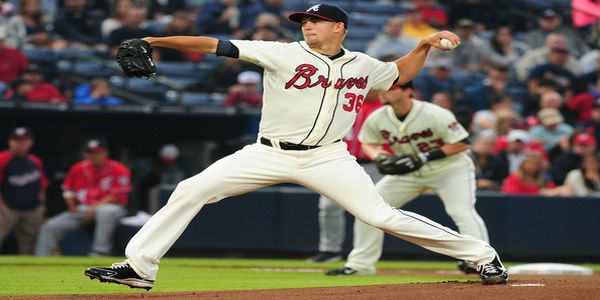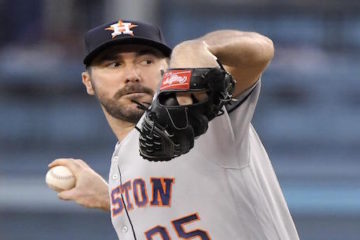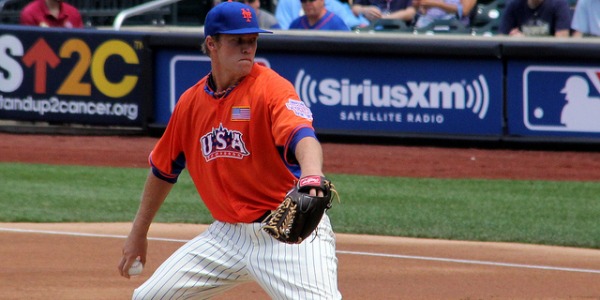2013 Fantasy Baseball: The Unheralded Mike Minor


Mike Minor is quite possibly the best pitcher in the major leagues who is never talked about. There are plenty of good pitchers to praise, so I don’t feel slighted at all that Minor’s name rarely comes up in casual discussions about the top tier of current pitching. The former first round draft pick has turned himself into a bonafide top 25 starting pitcher in the MLB after once being known as a “safe pick” in the draft. How has he managed to do it?
Early 2012 Struggles
The first half of the 2012 season wasn’t kind to Minor. He posted a 5.97 ERA over 92 innings. His peripherals weren’t much better either (5.45 FIP/4.72 xFIP). One of his main problems was the amount of free passes he was handing out. Minor was walking 3.91 batters per nine innings or 10.1% of the batters he faced. It’s extremely difficult to succeed when you’re constantly setting yourself up for failure.
This data from the first half of 2012 paints a picture of Minor’s pitch usage along with his velocity and how much each pitch moves vertically and horizontally. We’ll compare that with 2013 a little further down.
Here is where we can start to connect the dots a little on why Minor was walking so many batters in early 2012. He wasn’t commanding his fastball at a high enough level. He was throwing his fastball outside of the zone nearly 35% of the time. Throwing pitches out of the zone isn’t necessarily a bad thing; it all depends on the sequencing and the situation.
That’s his pitch mix from July 2012 until now. The sinker is a new development for Minor in 2013. Of the 108 sinkers recognized above 104 have came in the 2013 season. Other than adding a new pitch to his arsenal what exactly has happened that has allowed him to get so much better?
Whiffs. Swings and misses. They are a huge part of a pitcher’s success and possibly one of the most important for sustaining long term success. Minor is getting more whiffs on every pitch since last July on every pitch except for his cutter. He’s added 2+ points to his whiff rates on his fastball, curve, and change. That’s a huge deal. It’s the goal of a pitcher. The best way to limit damage is to not allow the chance of damage to occur.
You might be asking yourself: How exactly is he getting more whiffs even though he isn’t throwing that many more strikes? Sequencing. Good pitchers usually all have one thing in common. They get ahead early with strikes and then make hitters get themselves out. Adam Wainwright and Clayton Kershaw are two perfect examples.
O-Swing% is the amount of swings you generate on pitches outside of the zone. Minor’s number has jumped a ton this season. We looked as his movement earlier and most of the pitches stayed the same (except for the curve which added a little depth). We’ve already touched on the fact that hitters are swinging and missing more, so I want to focus on the F-Stike% column. Minor is getting ahead with a first pitch strike over 64% of the time in 2013 (I couldn’t splice the data to include late 2012). He’s getting ahead of 5.4% more of the batters he faces. That may not seem like a lot, but it is. As of this writing Minor’s first strike percentage ranks 21st in the majors out of 87 qualified pitchers. Compare that with his 69th place ranking out of the 88 pitchers who qualified in 2012. He’s in much better company this season.
Going Forward
Minor is the most polished pitcher the Braves have on the roster. Julio Teheran and perhaps even Alex Wood could have more upside, but Minor is by far the most polished. It sounds cliche, but Mike Minor learned how to pitch. A lot of pitchers every year have good fortune or luck and things just go their way. Minor’s last 365 days can’t be chalked up to that. We’ve noticed fundamental changes in the way he pitches and the results that have followed.
He learned the value of getting ahead of hitters with his fastball and forcing them to play defense and chase his off speed offerings. Minor is a flyball pitcher, 43% of balls put in play are in the air, so there’s no doubt that the Braves having a rangy outfield helps him out on defense. Flyballs can turn into homers in a hurry, but Minor has done a much better job of avoiding the long ball in 2013.
Luckily for the Braves the core of their rotation (Minor, Wood, & Teheran) is under control for a long time. Barring any injuries it looks as if Frank Wren has channelled a little bit of the 1990’s. Good pitching is hard to develop, but the Braves have seemingly mastered the art. As long as Minor and company can stay healthy the Braves are in good hands for a long time.
*Thanks to FanGraphs and Brooks Baseball for all of the data*










